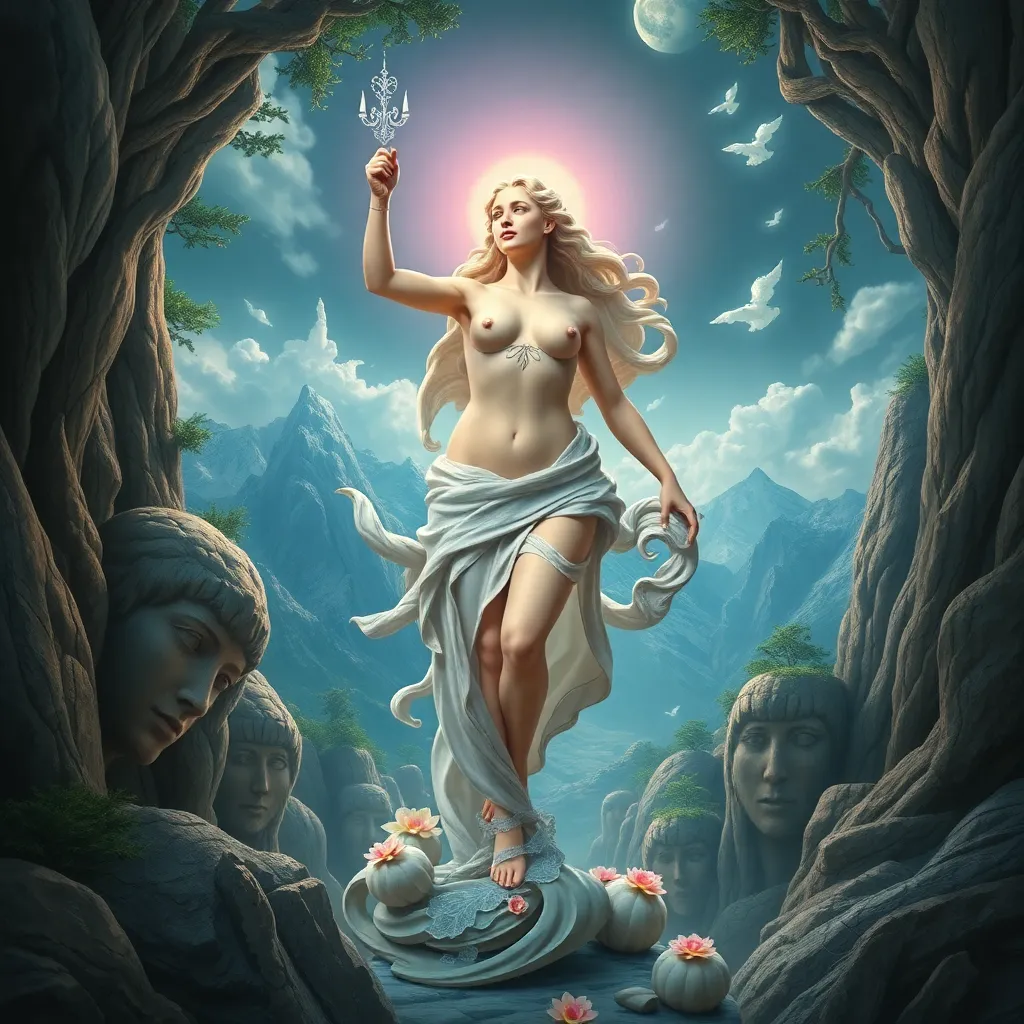The Legends of Aphrodite and Her Birth from Mount Olympus
I. Introduction
Aphrodite, the Greek goddess of love, beauty, and desire, holds a prominent place in Greek mythology as one of the most revered deities. Her significance extends beyond mere beauty; she embodies the complexities of love and its power over mortals and gods alike. This article explores the legendary birth of Aphrodite and her connection to Mount Olympus, providing insight into her origins and the myths that surround her.
II. The Origins of Aphrodite
The creation of Aphrodite is shrouded in various myths, each offering a unique perspective on her origins. Two primary accounts dominate the narrative:
- Hesiod’s Account: In his work “Theogony,” Aphrodite is described as emerging from the sea foam, a product of the castration of Uranus by Cronus.
- Homer’s Account: In “The Iliad,” Aphrodite is depicted as the daughter of Zeus and Dione, illustrating a more traditional lineage among the gods.
The imagery of her birth from sea foam emphasizes themes of beauty and femininity, linking her to the ocean’s vastness and mystery. This aquatic origin story has inspired countless interpretations in art and literature.
III. The Role of Mount Olympus
Mount Olympus, the highest mountain in Greece, serves as the mythological home of the Olympian gods. It represents a realm of divine power and immortality, where deities gather to rule over the mortal world. Aphrodite’s placement among the Olympian gods signifies her importance in the pantheon.
- Divine Council: As a member of the Olympians, Aphrodite is often depicted participating in divine councils, influencing the fates of both gods and humans.
- Interactions with Other Gods: Her relationships with other deities, particularly with Ares, the god of war, and her rivalry with Hera and Athena, illuminate her complex character and the dynamics of the divine world.
IV. The Birth of Aphrodite: The Hesiodic Account
Hesiod’s “Theogony” provides a detailed account of Aphrodite’s birth, describing her emergence from the sea foam created by the severed genitals of Uranus, which fell into the ocean. This image is not only striking but also rich in symbolism:
- Sea Foam: Represents purity and beauty, as well as the chaotic forces of nature.
- Symbolism of Birth: Her birth from a violent act underscores the duality of love and conflict, beauty and chaos.
This narrative emphasizes her role as a powerful force in both love and strife, setting the stage for her interactions with other gods and mortals throughout mythology.
V. The Birth of Aphrodite: The Homeric Account
In contrast to Hesiod, Homer presents a different perspective on Aphrodite’s origins in “The Iliad.” Here, she is portrayed as the daughter of Zeus and Dione, suggesting a more conventional lineage among the gods. This account highlights her divine heritage and illustrates her significance among the Olympians.
- Divine Lineage: Being the daughter of Zeus places her in a position of power and influence among the gods.
- Similarities and Differences: While Hesiod’s account emphasizes her chaotic origins, Homer’s portrayal aligns her more closely with the other Olympians, suggesting a balance between chaos and order.
VI. Aphrodite’s Character and Attributes
Aphrodite embodies numerous qualities that reflect her role as the goddess of love and beauty. She is often depicted as enchanting, alluring, and sometimes capricious. Her character can be explored through the following attributes:
- Goddess of Love: Aphrodite’s primary domain is love, encompassing both romantic and platonic forms.
- Beauty Personified: Representing physical and inner beauty, she inspires artists and lovers alike.
- Complex Relationships: Her romantic escapades with Ares, her marriage to Hephaestus, and her interactions with mortals highlight her multifaceted nature.
These attributes make her a compelling figure in Greek mythology, influencing countless stories and legends.
VII. Aphrodite’s Influence on Art and Culture
The impact of Aphrodite on art and culture cannot be overstated. From ancient sculptures to modern interpretations, her image has evolved yet remained a symbol of beauty and love. Some key aspects include:
- Ancient Art: Artists such as Praxiteles created renowned sculptures of Aphrodite, capturing her beauty and grace.
- Literature: Aphrodite’s influence can be seen in works by poets like Sappho and playwrights like Euripides, who explored themes of love and desire.
- Modern Culture: Today, Aphrodite continues to inspire films, literature, and art, symbolizing the enduring power of love and beauty.
VIII. Conclusion
The legends surrounding Aphrodite’s birth and her significance in Greek mythology provide a deep understanding of love, beauty, and their complexities. Her dual origins highlight the tension between chaos and order, while her relationships with other deities underscore her influential role in the divine hierarchy. Aphrodite’s lasting legacy in art and culture speaks to her enduring appeal, making her a timeless figure in both mythology and contemporary society.




